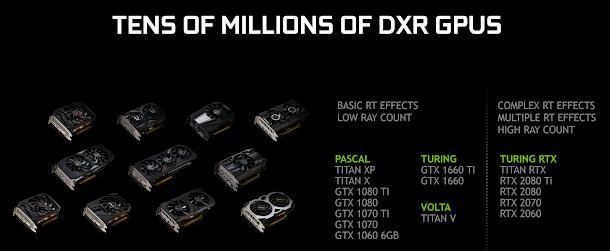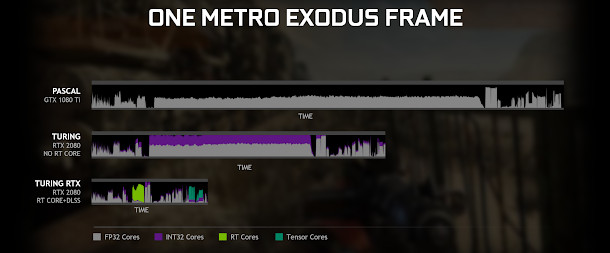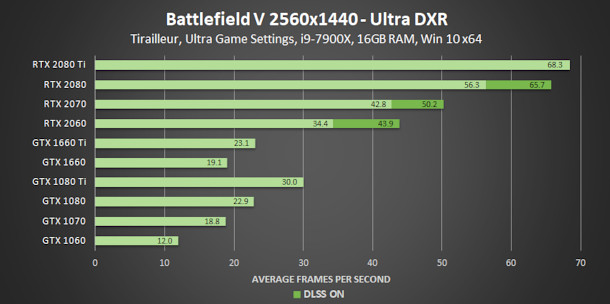New Nvidia driver brings true DXR ray tracing to older GPUs

Nvidia has released a new Game Ready Driver that expands support for DirectX Raytracing (DXR) on some of its older GPUs, including the GeForce GTX 1060 to 1080 Ti and the Titan X, XP and V.
Although performance isn’t as good as on the firm’s new RTX GPUs, which have dedicated ray tracing processor cores, Nvidia says that it is enough to let users “test drive basic DirectX Raytracing effects”.
The basis of hardware-accelerated ray tracing in UE4 and Unity
First announced at GDC 2018, DXR is an extension of DirectX 12 that integrates ray tracing into the graphics API as an alternative to rasterisation, enabling more realistic shadows, reflections and indirect illumination.
The technology was back in the news at GDC this year, with both Unreal Engine 4.22 and the upcoming Unity 2019.3 implementing or due to implement hardware-accelerated ray tracing via DXR.

Processor usage during the calculation of ray traced GI in Metro Exodus: Nvidia’s new driver accelerates calculations on CUDA FP32 cores but performance is still much better with the RT cores in newer GPUs.
Improved DXR support on selected Pascal and Volta GeForce and Titan GPUs
Until now, the hardware in question was Nvidia’s Turing RTX graphics cards: its GeForce RTX, Titan RTX and Quadro RTX GPUs all feature dedicated RT ray tracing cores.
While DXR is supported on older DirectX 12-compatible hardware, this is only as a generic fallback, so performance is limited.
The new driver provides a halfway house, accelerating ray tracing operations on the CUDA FP32 cores in older Nvidia Pascal and Volta GPUs.
That includes the GeForce GTX 1060, 1070, 1080 and 1080Ti – still commonly used by CG artists, and still capable of good performance with DCC software, as Jason Lewis’s recent benchmark tests demonstrate.
The new driver also extends DXR support on the Titan X, Titan XP and Titan V, and Turing cards that lack dedicated RT cores like the GeForce GTX 1660 and 1660 Ti.

Performance good enough for ‘basic’ ray tracing effects
As you might expect, even with the driver, ray tracing performance is still much lower on non-RTX cards.
In the benchmarks shown in Nvidia’s blog post discussing the new driver, frame rate on a GeForce GTX 1080 Ti is typically a third to a fifth of that on a current top-of-the-range GeForce GTX 2080 Ti.
Even on a 1080 Ti, frame rates only get above 30fps on a few benchmarks, and none of those are running at full 4K resolution.
As the name suggests, the new driver is targeted at gamers, so performance may also be better in specific games for which it is tuned than it is in general CG work.
However, it should still provide a welcome – if limited – performance boost for anyone running applications that support DXR on older Nvidia graphics hardware.
You can download the driver by installing Nvidia’s GeForce Experience and navigating to the Drivers tab.
Read more about DXR ray tracing on non-RTX GPUs on Nvidia’s blog
